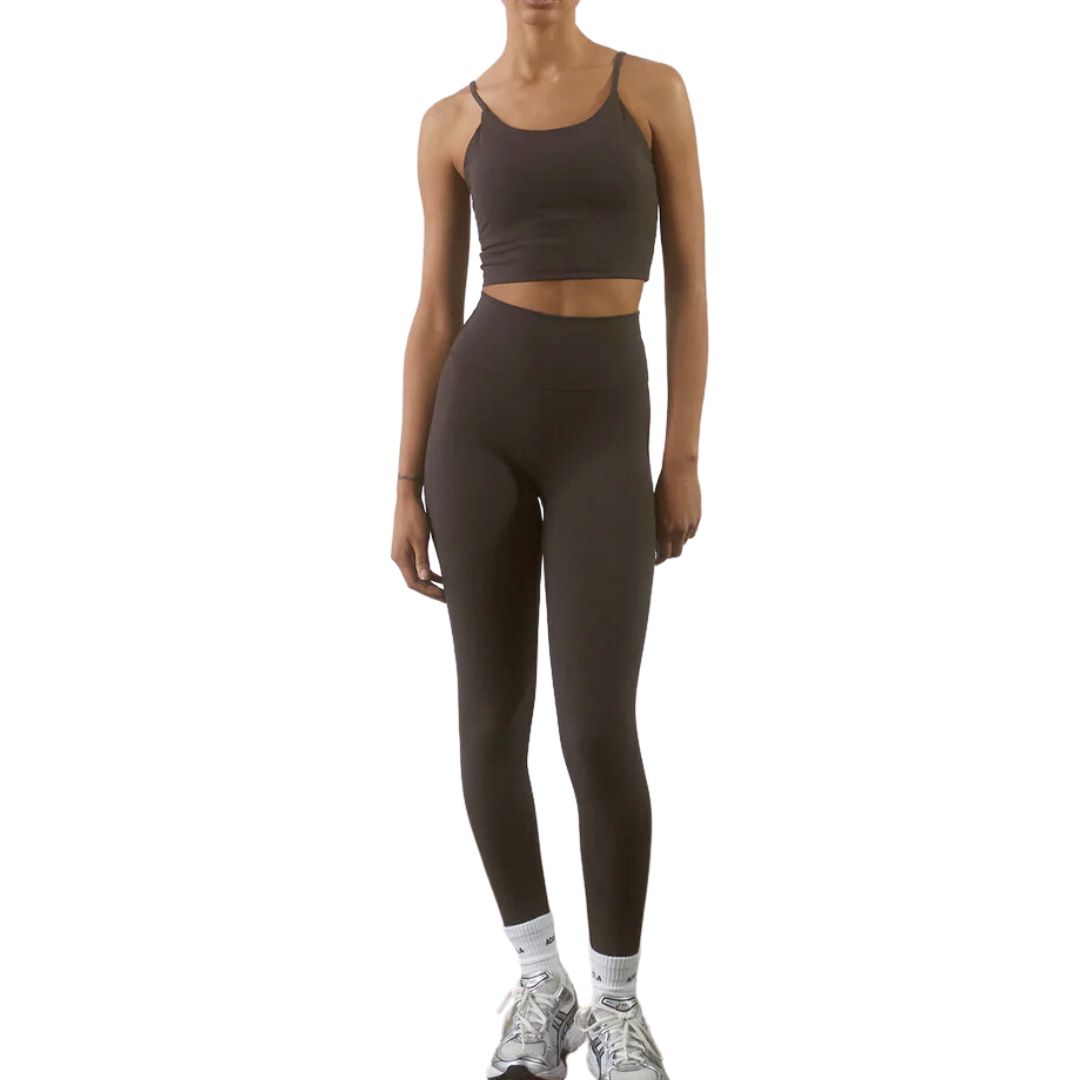Seen PCOS Workouts Trending on TikTok? 5 To Try To Boost Body and Mind, According to Top Pros
Ease into movement.


An estimated one in every ten women in the UK has polycystic ovarian syndrome, otherwise known as PCOS. While it's a great thing that the women's health condition is finally being talked about more openly, alongside greater awareness inevitably comes a lot of noise about what the condition is and what lifestyle tweaks can help with symptoms (TikTok, we're looking at you).
One thing we do know for certain is that exercise is almost universally beneficial, with research like this study, published in the journal Frontiers in Physiology, consistently showing that exercise is linked to improved health outcomes in women with PCOS. Helpfully, research such as this has helped to move the conversation along from simply advising us to lose fat (easier said than done, and certainly not a cure-all) to embracing other lifestyle interventions in our quest for relief.
And the result? PCOS workouts are trending on most social media platforms right now, with a wide range of experts sharing their two cents on which type of sweat session you should go for. Below, we've spoken to top experts to share your complete guide to where to look for exercise inspo that will help, rather than hinder, the condition and your symptoms.
Keen to read more, while you're at it? Don't miss our explainer on Polycystic Ovarian Syndrome and guides to the most helpful and well-researched PCOS treatments and nutritionist-approved PCOS supplements, here.
As PCOS workouts trend on TikTok - 5 best to try today, according to PT's
What is PCOS?
First up, let's take a look at what PCOS actually is. "Polycystic Ovary Syndrome (PCOS) is one of the most common hormone conditions affecting women of reproductive age, impacting around one in ten women in the UK," explains Dr Deepali Misra-Sharp, NHS GP and women’s health specialist.
"Despite the name, having cysts on the ovaries isn’t essential to the diagnosis; doctors diagnose PCOS when two out of the following three are present: irregular or absent periods, high levels of androgens, and polycystic ovaries on ultrasound."
What are the symptoms of PCOS?
While PCOS presents differently from person to person, there are common symptoms that can help identify the condition. As well as (according to the NHS) being one of the most common causes of women's infertility, PCOS can cause the following:
Celebrity news, beauty, fashion advice, and fascinating features, delivered straight to your inbox!
- Irregular or missed periods
- Acne, especially on the jawline or chin
- Increased facial/body hair (hirsutism)
- Scalp hair thinning
- Fatigue, low mood, poor sleep
- Weight gain or difficulty losing weight, especially around the middle
- Fertility challenges due to irregular ovulation.
What are the benefits of working out when you have PCOS?
Living with PCOS can be debilitating, and, at best, tricky to manage. "It’s a condition that affects much more than just fertility," notes Dr Misra-Sharp. "It can disrupt metabolism, increase the risk of type 2 diabetes and cardiovascular disease, and affect skin, weight, and emotional well-being."
That said, it's well-known that lifestyle factors can influence the severity of symptoms and help women manage the side effects. And the most effective lifestyle intervention? Exercise.
"Exercise is one of the most effective non-medical interventions we have for PCOS," agrees Dr Misra-Sharp. "Even without weight loss, movement improves insulin sensitivity, reduces circulating androgens, and supports ovulation. It's recommended as first-line management for PCOS."
And the benefits of working out don't stop at the purely physical, either. "Regular activity also improves mood, energy, sleep and stress – all important, as PCOS often affects emotional wellbeing, too," notes Dr Misra-Sharp.
What's the best way to work out with PCOS?
Creating a balanced, PCOS-friendly workout regime doesn't have to be complicated - there's just a few guidelines to follow for maximum benefits.
1. Find an exercise you enjoy
When it comes to working out with PCOS, consistency is key, and finding an exercise you really enjoy is half the battle.
"There’s no perfect formula for a PCOS workout," advises Dr Misra-Sharp. "What matters is what you enjoy and can stick to. Consistency over perfection is key - even 20 to 30 minutes, three to five times a week, can make a real difference."
2. Go easy on the cardio
It's well known that intense cardio workouts can spike cortisol levels, something that can wreak extra havoc when it comes to regulating PCOS symptoms. "Avoid overtraining or intense daily cardio as it can spike cortisol, our stress hormone," advises personal trainer Tej Patel. "In turn, this can worsen fatigue and disrupt hormones further."
3. Aim for a balanced regime
As with all exercise regimes, your aim should be balance, not burnout: less is sometimes more.
"Prioritise balance in your routine," cautions personal trainer Michael Baah. "Over the course of the week, think about blending strength, intervals, daily movement, core work, and rest. Remember to listen to your body: track your cycle, energy, and recovery, and dial back HIIT if fatigue or cramps spike."
5 best PCOS workouts to try today, according to pros
1. 10-minute walking workout
What? A 10-minute walking workout you can do from home on rainy days, or take it outside when the sun shines.
Why? "Walking is effective in blunting post‑meal glucose spikes," notes Baah, "It also increases non-exercise activity thermogenesis (NEAT) for easy and continuous metabolic burn. Try walking for 10 minutes after your two largest meals to flatten glucose and insulin surges."
How long for? A super short and sweet 10 minutes.
2. 15-minute HIIT interval workout
What? A classic 15-minute HIIT interval session with online King of workouts, Joe Wicks.
Why? "Up to fifteen minutes of all‑out intervals rapidly reduces visceral fat and improves insulin response faster than steady‑state cardio," advises Baah. "But don't forget that excessive HIIT can spike cortisol, hinder recovery and ovulation, and raise injury risk. I advise keeping the total interval time under 20 minutes per week and separating sessions by at least 48 hours from strength days."
How long for? Just fifteen minutes.
3. 30-minute full-body resistance workout
What? A 30-minute, full-body resistance training workout using dumbbells.
Why? "Full‑body compound circuits including moves like squat, hinge, push, pull, with glute and core finishers work to trigger GLUT‑4 receptor activity to shuttle glucose into muscles," explains Baah. "This lowers fasting insulin and reduces testosterone. Be sure to choose a load that makes the last two reps challenging, but maintain perfect form."
How long for? Half an hour.
4. 30-minute mat Pilates
What? A 30-minute mat-based Pilates session with Move with Nicole.
Why? "Choosing a Pilates or barre-style class once a week will activates transverse abdominis for pelvic‑floor support, reduce bloating, and correct posture to alleviate back and pelvic discomfort," advises Baah. "Try to focus on form and technique, as precision activates the right muscle fibres."
How long for? Just half an hour.
5. 40-minute Yin Yoga flow
What? A relaxing and restorative yin yoga flow to stretch your body and soothe your mind.
Why? "A regular yoga practice can help to lower chronic cortisol, improve sleep quality, and prime your body for recovery and hormone balance," notes Baah. " Practice at the end of the day or on active‑recovery days for maximum relaxation and nervous‑system reset."
How long for? 40 minutes.
Shop MC UK's go-to workout essentials now:
What causes PCOS?
"PCOS is a multi-factorial condition," explains Dr Misra-Sharp. "While the exact cause isn’t fully understood, insulin resistance is believed to be central. When the body doesn’t respond effectively to insulin, it compensates by producing more. This excess insulin stimulates the ovaries to produce more androgens, which in turn disrupt ovulation and hormone balance.
"Genetics also play a role, and PCOS often runs in families. It's a common misconception that it's linked to weight, but all shapes and sizes of women can have insulin resistance, so it’s not just about weight."

Anna Bartter is a freelance journalist who writes about health, fitness and women's lifestyle for publications including Stylist, Metro and Psychologies, among others.
She's always on a quest to find a variety of fun and functional workouts that give you the most bang for your workout buck and she's passionate about championing movement for everyone's mental and physical wellbeing.






